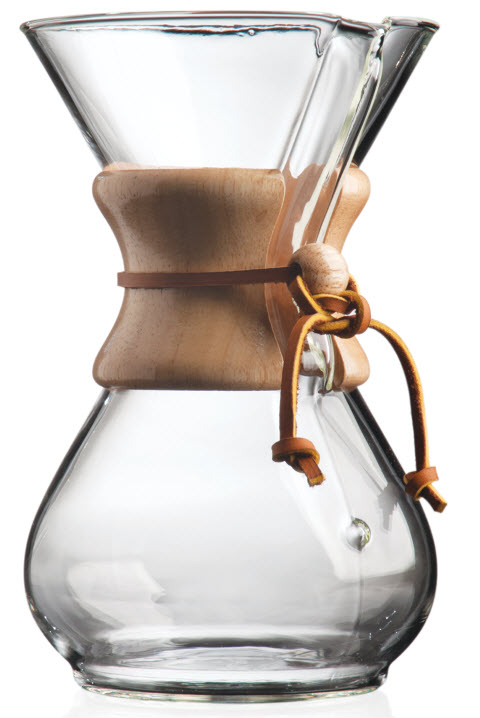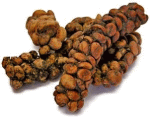What is "Mocha" coffee?
In the coffee industry the term "mocha" can refer to three things:
1. Variety - mocha is one of three varieties originating from Yemen - others include typica and bourbon. While these three varieties are considered "heirloom varietals" and are perhaps the oldest, they are considered by many coffee experts as superior; they are usually more compact and less productive than their hybrid counterparts.
2. Beverage preparation - before the destruction of Yemen's coffee industry by a fungus, Mocha coffee was appreciated by many roasters due to its unique dark chocolate/caramel taste. When its production significantly dropped due to infestation, many roasters were severely left without inventory and ultimately had to create a way to "recreate" this unique origin. Nowadays, the term "mocha" is a beverage prepared where dark chocolate coffee is usually added along with milk.
Source: Coffee: A Celebration of Diversity, p. 75
Who is Kaldi?
Kaldi is the Abyssian (present day Ethiopia) herder who is credited with the discovery of coffee. Apparently one day he awoke to see his goats frolicking around a coffee shrub eating a red cherry. After trying the bean himself he soon found himself widely awake, the rest is history. See our history section for more info.
What is Postum?
Developed by C.W. Post in 1895, Postum is a caffeine free, powdered coffee substitute made mostly of roasted wheat and molasses. The product was developed as an alternative to coffee, since caffeine at the time was thought to be harmful to health. Several products have since been created in an effort to mimic coffee's taste, without the caffeine. Postum is still available today, but is now marketed by Kraft Foods.

Why is coffee brown?
Coffee's characteristic brown color comes from the formation of melanoidins, brown colored polymetric compounds created during the roasting process, namely the Maillard reaction. In coffee, melanoidins account for roughly 25-30% of coffee's beverage weight. The compounds are quite similar to the 'melanin' stored under human skin and responsible for our skin characteristic tan-like color.
Does the U.S. produce coffee?
Both Puerto Rico and Hawaii have been growing coffee since the early 1800's, although technically Puerto Rico is not a State. Together they produce roughly 161,000 bags (60kg) according to 2006/2007 estimates, of this only 14,000 bags are of specialty quality1.
1. FAS/USDA
What are "espresso beans"?
Contrary to popular belief there is no such thing as "espresso beans" grown on espresso plants. The term is usually used to refer either a specific blend of beans for espresso use, or a style of roasting or a combination thereof.
What is "Chemex" brewer?
Developed during the 1940's by industrial chemist Peter Schumbohm, and popularized in the 1950's, these brewers consist of a glass coffee pot shaped like an hour glass. In essence, the brewer is a modified glass funnel over a Erlenmeyer flask. What differentiated this brewer was the use of heavy filter paper, which retained sediment, but allowed for aromatic compounds to come through. Schlumbohm described his brewer as "the Chemists way of making coffee". CHEMEX is a registered trademark and does not refer to a generic style of brewer.

What is a "peaberry"?
Under normal development a cherry will produce two beans, each grown along their flat sides facing each other. When one bean fails to develop, the other bean will occupy its space and a single bean forms - resulting in a 'peaberry'. Although technically a mutant bean, some coffee professionals claim the beans have a richer more concentrated flavor, though this is still inconclusive. Perhaps the most famous peaberry beans are the Tanzanian peaberry which command higher prices, but several other origins including Kona, Kenya AA and Java exist.
What is "monsoon" coffee?
Monsoon coffee originated in India as a way to replicate Old Brown Java coffees after the island was devastated due to fungal infestations. The exact origin of monsoon is varied, but it is believed that shipping the coffee from Java to Europe in the wooden hulls of ships resulted in a coffee with a similar taste profile as that of true Java coffee.
In the monsoon aging process, beans are stored in open-sided warehouses for several months and exposed to the damp salty winds of the monsoon. The process is believed to reduce acidity, imparting a 'meaty', heavy, syrupy profile. Monsoons beans have a slightly tan color, resembling pergamino, and are roughly double in size.
What is "Excelsa" coffee?
Excelsa coffee or Coffea Dewevri is another type commercially available coffee, although less important in market, it accounts for only 1% of total coffee production.
What is "Kopi Luwak" coffee?
Kopi or Indonesian for 'coffee', is coffee that has been eaten and digested through the digestive tract of the Common Palm Civet (Paradoxurus hermaphroditus). The mammal, which goes by a number of different names inlcluding Luwak, Luak, Toddy Cat or Asian Palm Civet, is indigenous to the South east Asia. The animal is commonly seen in Sumatra, Java, and Sulawesi in Indonesia, though in Vietnam the coffee is called "weasel coffee" or Kape Alamid.
 |
 |
Kopi Luwak is one of the most expensive coffee's in the world commanding up to $300 USD per pound with the majority of the coffee being sold to Japan and the United States. It is estimated that only tree to five hundred pounds of this coffee is produced per year.
According to coffee professionals, the distinct conditions within the digestive tract of the palm civet creates a coffee with a smoother cup profile. In 2004, a SARS scare led to thousands of civets being exterminated, though the demand for coffee remained unaffected.
How many cups of coffee can I make from 1 lb of coffee?
Generally 1lb of coffee will produce anywhere from 30-40 cups (6-8oz) cups of coffee. Of course this depends on the method of brewing, coffee weight use, strength, etc. The SCAA recommends using 55 grams of ground coffee per liter of water, or approximately 8.25g per 150mL, accounting for less than ten cents per cup and making specialty coffee a relatively low cost "luxury".
